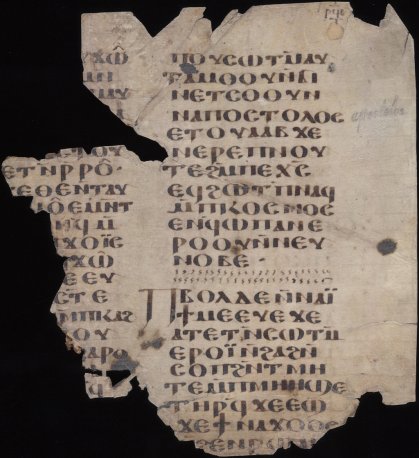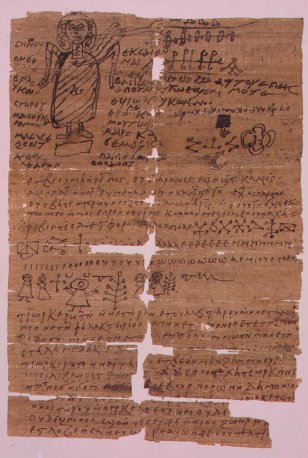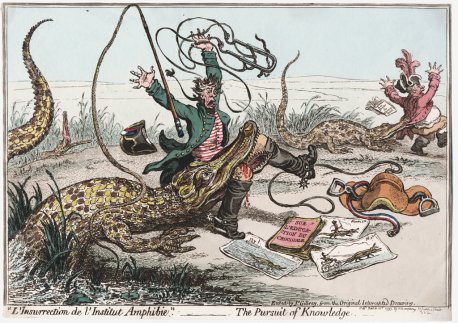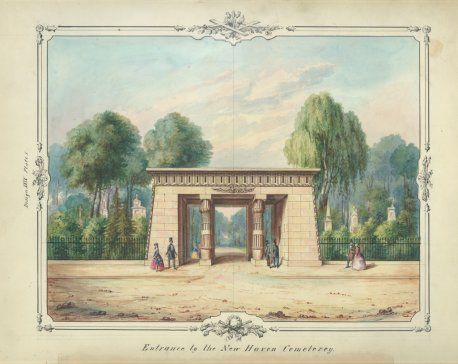Looking Through the Pylon
Looking Through the Pylon [ edit ]
“Dignified and beautifully proportioned, it [the gateway] is symbolic of an attitude toward the dead and their part in the hereafter, expressive, but respectful and reverential, which arose in the valley of the Nile centuries before Christianity and is consequently so detached from modern creeds, prejudices or sentiments that it can appeal to any belief.”
— Denison Olmstead, Professor of Astronomy and Natural Philosophy at Yale University, July 18, 1845, at the laying of the cornerstone of the New Haven City Burial Ground (Grove Street Cemetery) gateway
The land of ancient Egypt—the Nile River valley and delta with the surrounding deserts—was the birthplace of a civilization that flourished for over three millennia. A long prehistory with interactions among groups from far-flung territories to the west and south, and later with the northeast, forged the rich cultural traditions of pharaonic Egypt. The monumental achievements of pharaonic culture inspired not only the later ancient Egyptians themselves, but have resonated throughout subsequent civilizations. The engagement—and occasional obsession—with ancient Egypt and the adaptation of its concepts and imagery are not confined to the forms and contents of the pyramids, temples, and tombs that have so awed tourists since classical times, but exist within the history of ideas. Over the last two millennia, in European traditions as well as in those of the Islamic world, the awesome physical presence of ancient Egyptian monuments was an expression of the equally potent wisdom they seemingly both preserved and at the same time guarded and concealed.
The legacy of ancient Egypt now extends throughout every inhabited continent and can be traced from antiquity to the modern day, spreading from Africa through the Mediterranean world, the Middle East, Europe, and eventually the Americas. The study of the reception of ancient Egypt in these different cultures and places is a field of scholarship in its own right, but our portal to this world will be a literal gateway: a pylon.
Typically a pair of towers at the entrance to a temple,and first appearing in fully developed form just before 2000 BCE, the pylon (ancient Egyptian bekhenet) symbolized the mountains of the horizon (ancient Egyptian akhet, hieroglyphic) and became the physical model for them. Through these architectural horizons, images of the deities of the temple might also go and come, or "rise" and "set" as the Egyptians described in cosmic terms the ritual procession of a divine image. The physical mass of the pylon visually anchoring the monument to the earth is balanced by the sloping sides that draw the viewer’s gaze upwards. Architectural details, such as the curving top element (cavetto cornice) and projecting rounded corners (torus molding), and monumental low-relief decoration prevented monotony in the otherwise flat planes of the pylon surface. The immediate recognizability of the pylon shape as a uniquely Egyptian form and its adaptability in scale, proportion, and ornament made it ideal for Egyptianizing monuments.
Within its ancient Egyptian setting, a pylon embodied the desert cliffs that framed the eastern and western edges of the valley through which the river flowed, at the same time representing the twin hills of the horizon through which the solar disk might rise and set. The shape of the pylon and its significance developed over centuries to become a standard element of temple decoration. One key to understanding the many echoes of Egypt in other lands and cultures is to explore how an architectural image and other iconographic aspects of a culture can be transferred from one time and place to another.





